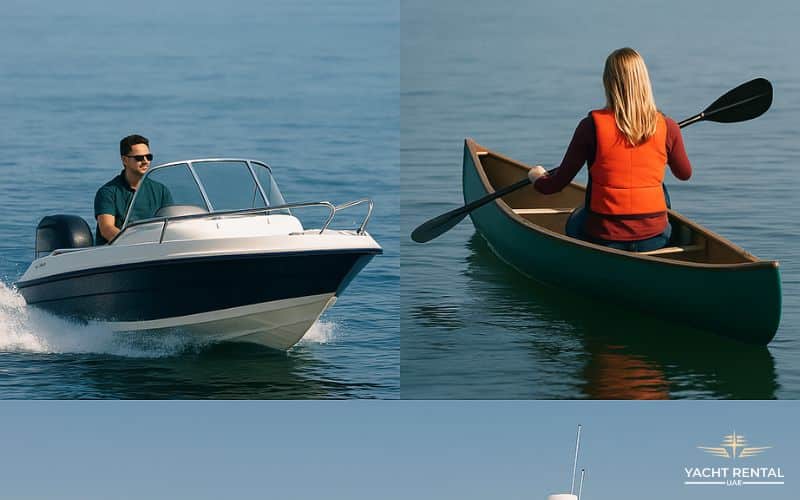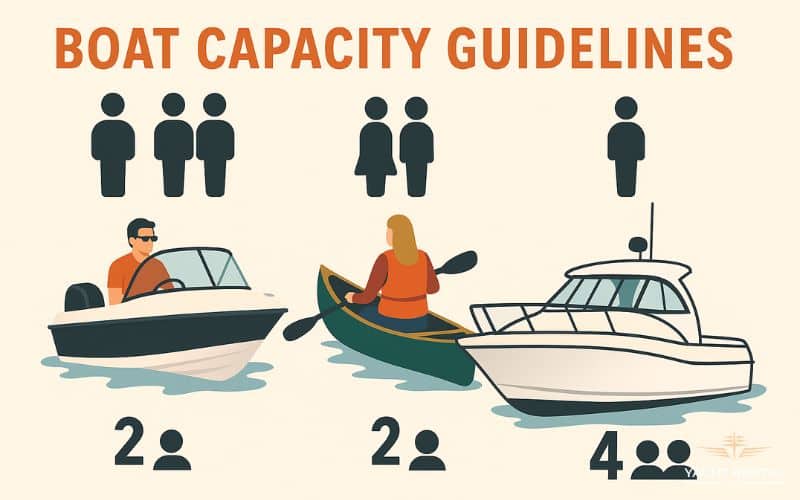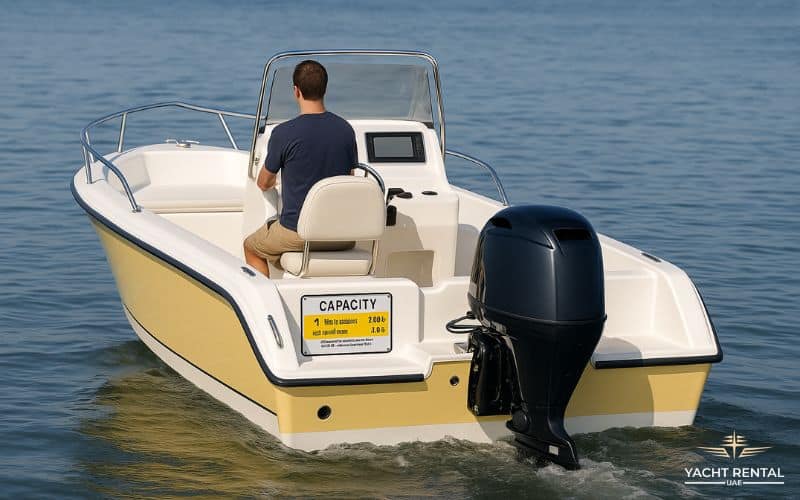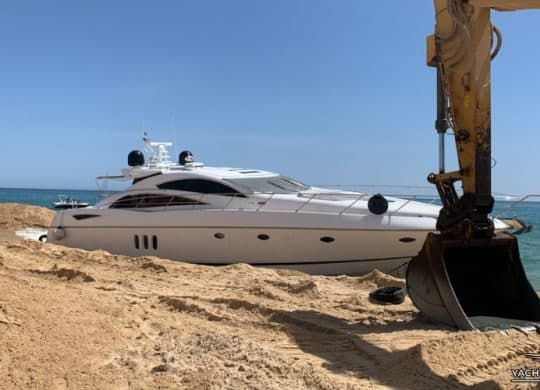Federal Requirements for Boat Capacity Plates
Powerboats less than 20 feet in length must have capacity plates according to federal law. The U.S. Coast Guard Federal Boat Safety Act of 1971 specifically requires monohull boats under 20 feet built after October 31, 1972, to display these plates.
Manufacturers must affix these plates permanently on boats powered by inboard, outboard, or stern drive engines. The requirement applies regardless of where you operate your vessel in United States waters.
Boat builders must comply with this federal mandate by installing capacity plates in visible locations. These regulations aim to prevent overloading accidents that can lead to capsizing. Overloading ranks among the leading causes of boating accidents and fatalities in American waters.
Boats Exempt from Capacity Plate Requirements

Not all watercraft fall under the federal capacity plate mandate. Sailboats operate under different regulations and do not require capacity plates. Canoes and kayaks and yachts less than 26 feet also receive exemption from these requirements because of their design and intended use. Inflatable boats constitute another category exempt from displaying capacity information.
Personal watercraft manufacturers follow separate guidelines. PWC manufacturers do not need to attach capacity plates, but they must provide capacity information in owner manuals and warning decals. Boaters should always check these alternative sources for guidance when operating vessels without capacity plates.
Information Displayed on Capacity Plates
Capacity plates contain vital safety information for boat operators. For outboard powered boats, plates display three critical pieces of information.
First, operators can find the maximum number of persons allowed onboard listed in both person count and total weight. Second, the plates show maximum weight capacity, including people, gear, and motor. Third, the maximum recommended horsepower appears on plates for outboard boats.
Inboard and stern drive boats have slightly different information on their plates. These vessels display maximum persons capacity and maximum weight capacity for persons and gear. The weight calculations assume an average adult weight of between 150 and 185 pounds per person. Boat operators must adjust accordingly when passengers exceed these averages.
Location Requirements for Capacity Plates
Federal regulations specify where capacity plates must appear on boats. Manufacturers must place these plates where operators can easily view them when preparing for departure. Common locations include near the operator position at the helm or on the inside transom of the boat.
Visibility remains an essential requirement for capacity plate placement. Boat owners cannot remove, alter, or tamper with capacity plates under any circumstances. The information must remain readable throughout the lifetime of the vessel. Damaging or removing these plates can potentially void insurance coverage and create legal issues.
Importance of Following Capacity Guidelines

Adhering to capacity limits protects everyone onboard from preventable accidents. Boats loaded beyond their capacity become unstable and difficult to control. Overloaded vessels sit lower in water and face an increased risk of swamping from wakes or waves. Weight distribution also affects boat performance and handling characteristics on water.
Many states have enacted laws prohibiting the operation of boats exceeding capacity limits. Violations can result in fines and penalties under state boating regulations. Insurance companies may deny claims for accidents occurring in overloaded boats. Safety always takes precedence over bringing additional passengers or gear onboard.
Calculating Capacity for Older Boats
Owners of boats manufactured before the federal requirements or homemade vessels can determine safe capacity through calculation. For boats without capacity plates, you can estimate passenger capacity using a simple formula. Multiply the boat length in feet by the boat width in feet, then divide by fifteen. The result indicates how many people your boat can safely carry.
For flat bottom boats, additional calculations determine safe horsepower ratings. Multiplying boat length by transom width provides guidance for appropriate engine size. Following these calculations helps maintain safety standards even on vessels without manufacturer provided capacity information.
Ensuring Proper Weight Distribution
Balanced loading contributes significantly to boat stability and safety. Proper weight distribution maintains appropriate trim for optimal handling. Keep heavy items secured and positioned low in the hull to maintain a lower center of gravity. Avoid concentrating weight on one side of the vessel, as this creates listing conditions.
Passengers should distribute themselves evenly throughout the boat. Too much weight in the bow causes plowing through water, while stern weight makes the bow rise excessively. Both conditions reduce visibility and control. Proper loading practices complement capacity limits to ensure safe operation under varying water conditions.
Also Read: Your Boat Gets Swamped Far From Shore: What Should You Do
Final Words About Boat Capacity Plate
Federal law requires capacity plates on powerboats less than 20 feet in length manufactured after November 1972. These plates provide essential information about maximum passenger count, weight limits, and horsepower ratings. Sailboats, canoes, kayaks, and inflatable boats receive exemptions from these requirements.







